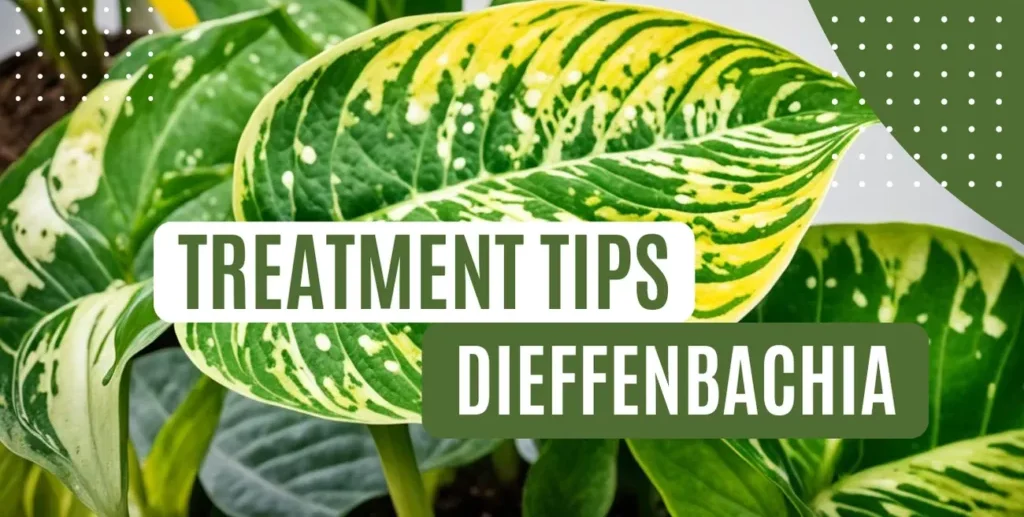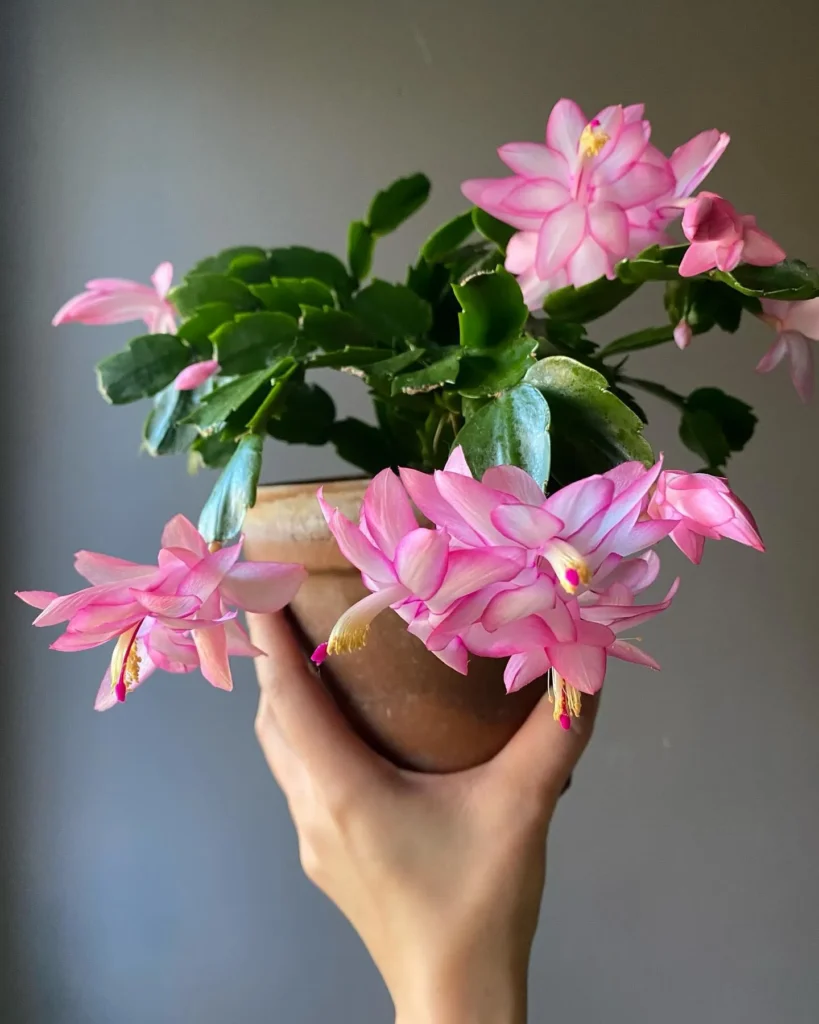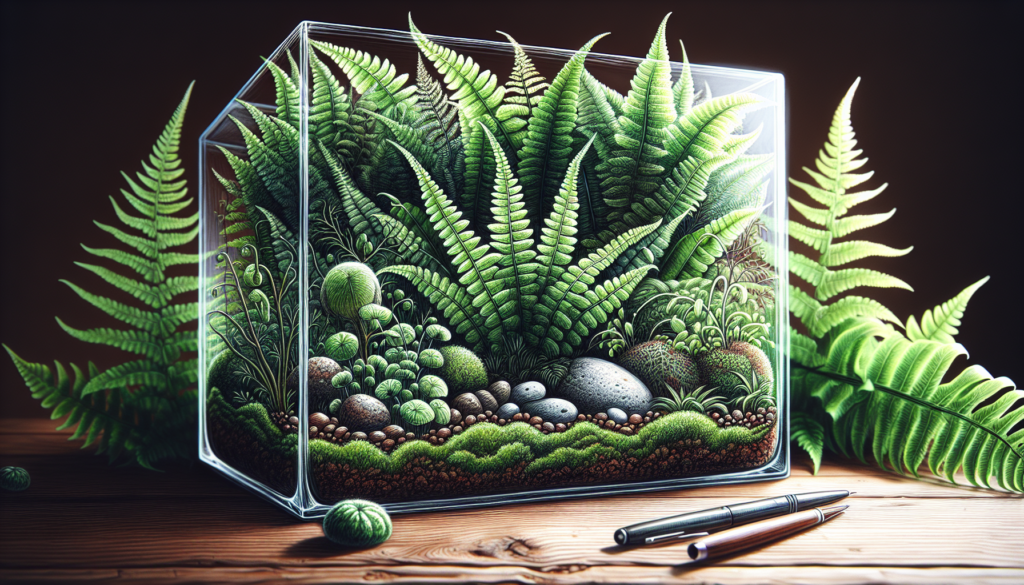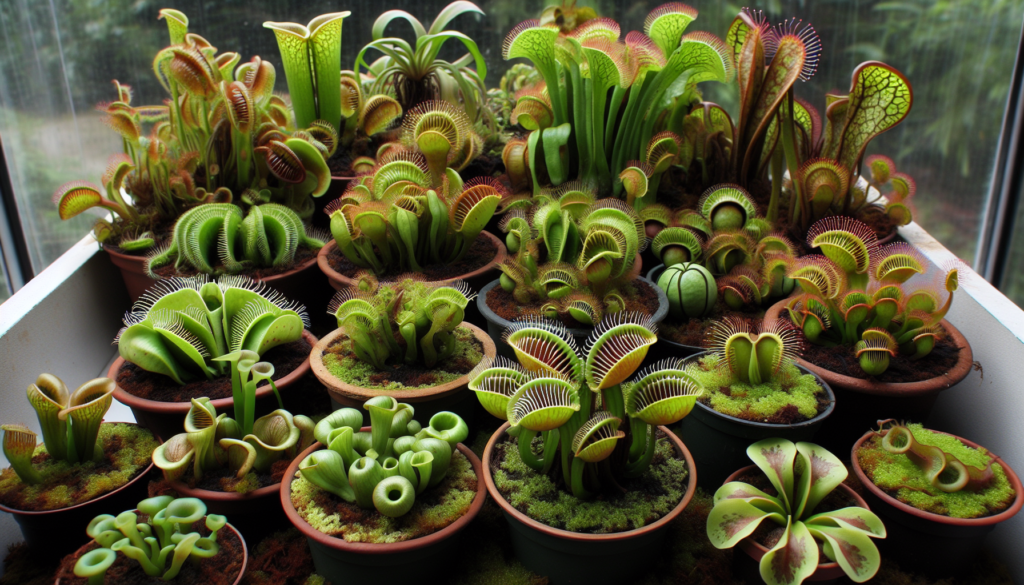Hello! Welcome to my Christmas Cactus Care Guide. If you’re a fan of houseplants and want to ensure your Christmas cactus thrives, you’ve come to the right place. In this guide, I’ll provide you with all the essential tips and tricks to keep your Christmas cactus healthy and blooming for years to come.
Welcome to my blog series on Dieffenbachia plant care! In this article, I will be discussing common pests and diseases that can affect your Dieffenbachia plants and providing you with valuable treatment tips.
Whether you’re a seasoned gardener or just starting out, this information will help you keep your Dieffenbachia plants healthy and vibrant.
Understanding Dieffenbachia Pests and Diseases

When it comes to caring for Dieffenbachia plants, it’s essential to understand the common pests and diseases that can affect their health.
By familiarizing yourself with these issues, you can take proactive steps to prevent and treat them, ensuring the longevity of your beloved plants.
First, let’s delve into the world of Dieffenbachia pests. These can include troublesome critters such as spider mites, mealybugs, and aphids. These pests can wreak havoc on your plants, causing discoloration, withering foliage, and stunted growth.
By learning to identify the signs and symptoms of pest infestations, you can act swiftly to implement effective pest control methods.
- Spider Mites: Look for tiny webbing, yellowing leaves, and fine stippling.
- Mealybugs: Keep an eye out for white, cotton-like clusters on leaves and stems.
- Aphids: Watch for distorted foliage, sticky residue, and black sooty mold.
To combat these pests, consider organic remedies such as neem oil or insecticidal soap. These plant-friendly solutions can effectively control infestations without harming the environment.
These ailments can cause unsightly blemishes, wilting, and even plant death if left untreated. By familiarizing yourself with the signs of these diseases, you’ll be better equipped to implement appropriate treatments.
- Leaf Spot: Look for dark spots or patches on the leaves.
- Root Rot: Watch for yellowing, wilting, and root discoloration.
- Bacterial Leaf Blight: Keep an eye out for water-soaked lesions and leaf collapse.
Implementing proper watering techniques, ensuring adequate airflow, and maintaining optimal lighting conditions can help promote disease resistance in your Dieffenbachia plants.
Additionally, regular inspection and sanitation practices can prevent the spread of diseases.
Common Pests Affecting Dieffenbachia Plants
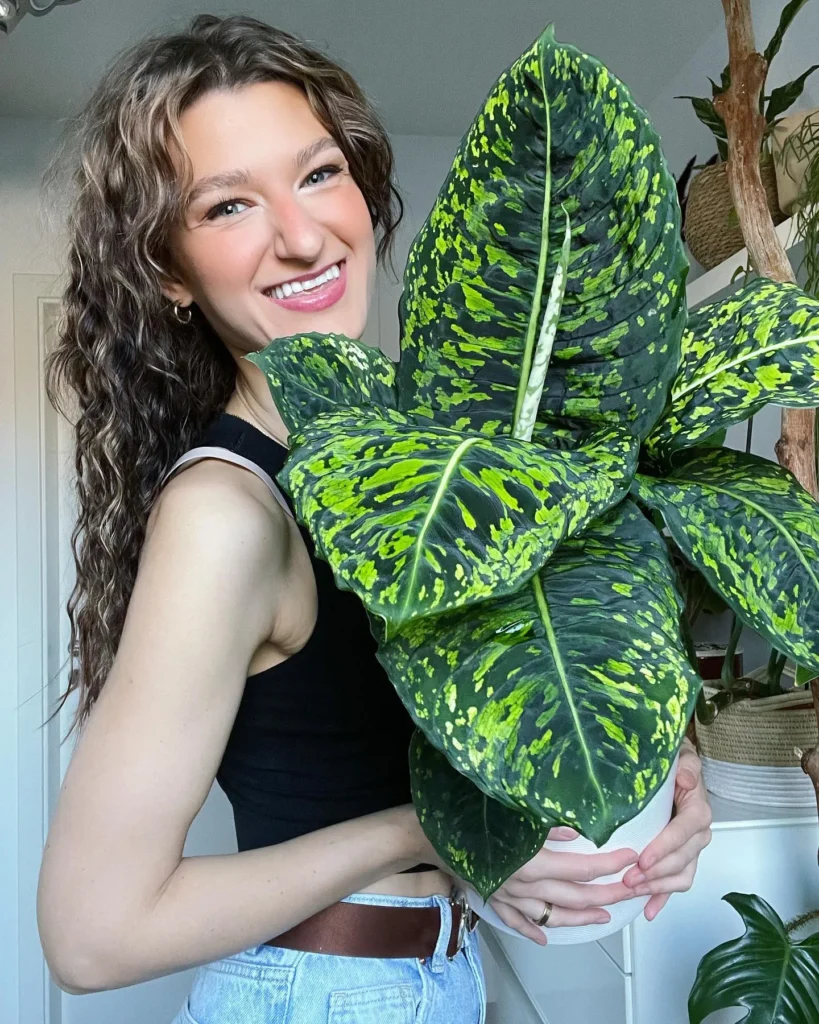
When it comes to cultivating Dieffenbachia plants, being aware of the common pests that can wreak havoc on your greenery is important.
By understanding the signs and symptoms of these pests, you can quickly identify and address any infestations before they cause irreparable damage. Let’s take a closer look at some of the most frequent culprits: spider mites, mealybugs, and aphids.
1. Spider Mites: These tiny arachnids are a common nuisance for Dieffenbachia owners. They feed on the plant’s sap, leaving behind a trail of webbing and stippled leaves.
To combat spider mites, regularly inspect the undersides of the leaves and employ a gentle touch when wiping them away with a damp cloth.
Additionally, keeping the humidity levels around your plants in a suitable range can help deter these pesky creatures.
2. Mealybugs: Mealybugs are small, soft-bodied insects that have a cotton-like appearance. You might spot them in the crevices between leaves or along the stems of your Dieffenbachia.
Infestations typically occur in environments with high humidity. For effective control, try gently wiping them away with a cotton swab dipped in rubbing alcohol.
You can also introduce natural predators like ladybugs to establish a balanced ecosystem.
3. Aphids: These small, pear-shaped insects are often found congregating on new growth, where they pierce the plant’s tissues to feed on sap. Presence of sticky residue, called honeydew, is a telltale sign of aphid infestation.
To manage aphids, consider using a strong spray of water to dislodge them from the leaves. If necessary, you can also opt for insecticidal soap or horticultural oils to control their population.
Quick Tips for Pest Control
- Regularly inspect your Dieffenbachia plants for signs of pests.
- Practice good hygiene by removing fallen leaves and debris.
- Isolate infected plants to prevent the spread of pests.
- Use natural deterrents like neem oil or insecticidal soap.
- Consider introducing beneficial insects like ladybugs.
Tackling Dieffenbachia Diseases
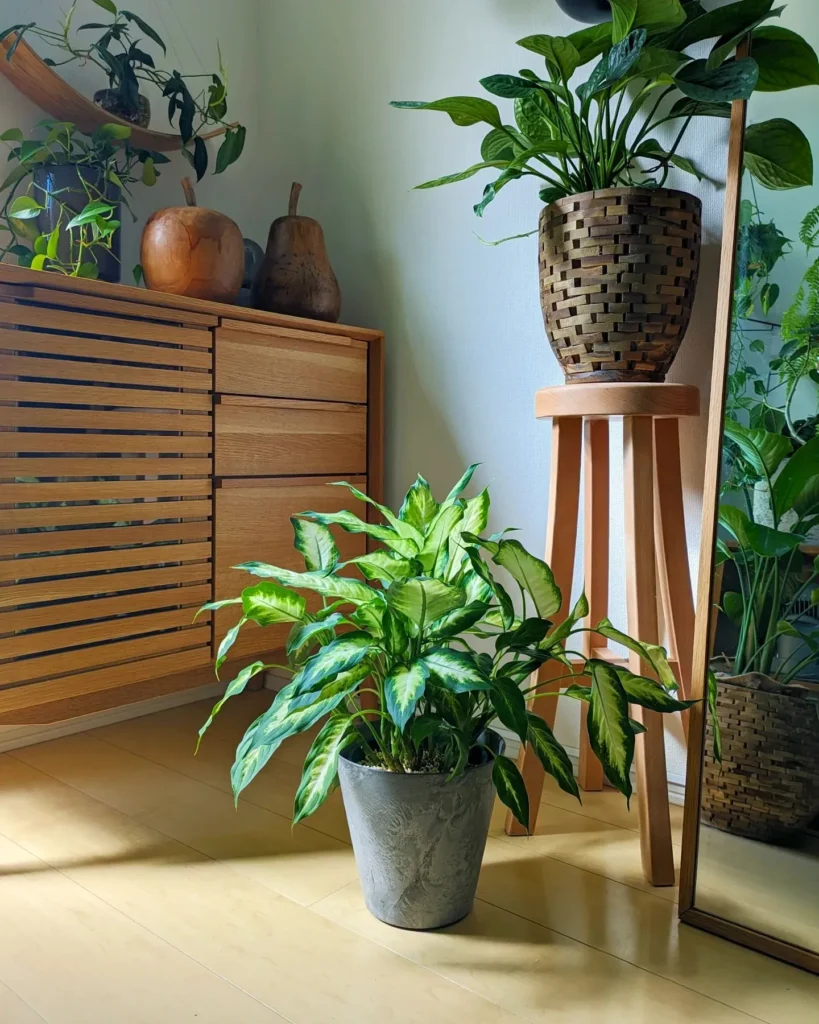
Dieffenbachia plants are susceptible to various diseases that can affect their overall health and vitality. By understanding these common diseases and implementing appropriate treatments, you can safeguard your plants and ensure their longevity.
One of the most common diseases that affect Dieffenbachia plants is leaf spot. This fungal infection manifests as small, dark spots on the leaves and can lead to leaf yellowing and dropping.
To combat leaf spot, it is crucial to remove and destroy infected leaves, improve air circulation around the plant, and avoid overhead watering.
Another prevalent disease is root rot, which is caused by overwatering or poorly drained soil. Root rot can result in wilting, yellowing leaves, and a foul odor.
To tackle root rot, it is vital to improve drainage, allow the soil to dry out between waterings, and trim away affected roots. You may also consider using a fungicide specifically formulated for root rot.
Bacterial leaf blight is yet another disease that can affect Dieffenbachia plants. It is characterized by water-soaked lesions on the leaves, which eventually turn brown and slimy.
To manage bacterial leaf blight, remove and destroy infected leaves, practice good hygiene by disinfecting your gardening tools, and avoid overhead watering.
Preventing Pest Infestations in Dieffenbachia Plants

Guidelines for Potting a Christmas Cactus
Proper potting is crucial for the health and growth of a Christmas cactus. Here are some key guidelines to follow:
- Choose a planter with a drainage hole: When potting a Christmas cactus, it’s important to select a planter that has a drainage hole. This allows excess water to escape and prevents the roots from becoming waterlogged, which can lead to root rot.
- Opt for a slightly larger pot: The new pot should be slightly larger than the previous container, providing enough room for the roots to grow. This will help prevent the plant from becoming root-bound and ensure optimal growth.
- Trim excessive roots: Before repotting, trim any excessive roots that may have grown to ensure a compact and healthy root system. This will also help the plant adjust to its new pot more easily.
- Avoid garden soil: It’s best to avoid using soil from the garden when potting a Christmas cactus. Garden soil may contain spores or critters that can harm the plant. Instead, opt for a well-draining potting mix specifically formulated for cacti and succulents.
Promoting Disease Resistance in Dieffenbachia Plants

When it comes to caring for your Dieffenbachia plants, disease prevention is key. By adopting proper care and cultural practices, you can significantly enhance the disease resistance of your plants and ensure their long-term health.
In this section, I will share valuable insights on how to promote disease resistance in your beloved Dieffenbachia plants.
Optimal Watering and Lighting Conditions
Providing your Dieffenbachia plants with the right amount of water and light is essential for their overall well-being and disease resistance.
It’s important to strike a balance and avoid extremes, as both overwatering and underwatering can weaken the plants and make them more susceptible to diseases.
Additionally, ensuring adequate sunlight or appropriate artificial lighting can help strengthen their natural defenses.
Good Airflow and Avoiding Stressors
Creating a conducive environment includes maintaining good airflow around your Dieffenbachia plants. Sufficient air circulation helps prevent the buildup of humidity and reduces the risk of fungal diseases.
You can achieve this by ensuring proper spacing between plants and placing them in areas with adequate ventilation. Moreover, avoiding stressors such as fluctuating temperatures and sudden changes in humidity levels can also contribute to promoting disease resistance.
Organic Remedies for Pests and Diseases in Dieffenbachia Plants
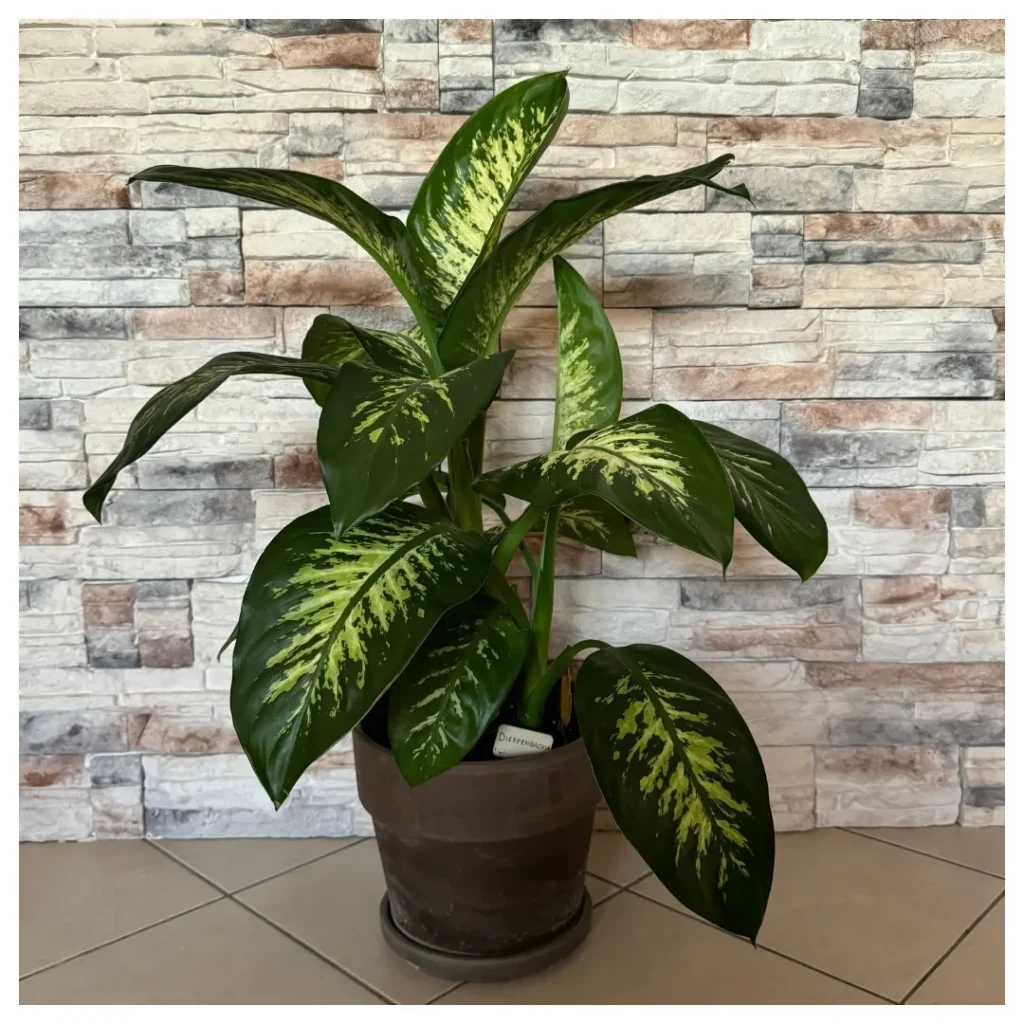
When it comes to dealing with pests and diseases in your Dieffenbachia plants, organic pest control and natural treatments offer plant-friendly solutions that are safe for both you and the environment.
By using eco-friendly alternatives, you can effectively combat infestations without resorting to harsh chemicals. Here are a few organic remedies to consider:
Neem Oil: Neem oil is derived from the neem tree and is a powerful natural insecticide. It works by disrupting the pests’ hormonal balance, thus preventing them from feeding and reproducing.
Dilute neem oil according to the instructions and spray it on the affected areas of your Dieffenbachia plants. This treatment is particularly effective for controlling spider mites and other common pests.
Insecticidal Soap: Insecticidal soaps are made from naturally occurring fatty acids and are effective at killing soft-bodied insects such as aphids and mealybugs.
Mix the soap with water as directed and spray it on the infested parts of your plants. The soap will suffocate the pests, effectively controlling the infestation.
Homemade Sprays: You can also make your own organic sprays using common household ingredients. For instance, a solution of water and dish soap can help deter and control pests.
Additionally, a mixture of water and vinegar can be used to combat fungal diseases. These homemade sprays offer a cost-effective and natural alternative to store-bought pesticides.
Dealing with Severe Pest and Disease Infestations

If you find your Dieffenbachia plants facing severe pest or disease infestations, it’s important to take immediate action to protect their health and vitality.
In some cases, professional assistance and advanced treatments may be necessary to effectively combat these issues.
When dealing with severe pest infestations, such as severe spider mite or aphid outbreaks, it can be challenging to eliminate the pests completely using traditional methods.
In such cases, consider seeking professional assistance from a pest control expert who can provide specialized knowledge and advanced treatments tailored to your specific needs.
Professional assistance is also crucial when facing severe disease infestations, such as widespread root rot or bacterial leaf blight. These diseases can quickly spread and cause significant damage to your Dieffenbachia plants if not addressed promptly.
A professional plant pathologist or horticulturist can accurately diagnose the issue and recommend advanced treatment options, including systemic insecticides or fungicides.
Maintaining Overall Health and Vigor of Dieffenbachia Plants

To ensure your Dieffenbachia plants thrive and remain healthy, it’s essential to implement proper plant care techniques and promote optimal growth.
By following these plant care tips, you can maintain the overall health and vigor of your Dieffenbachia plants while minimizing the risk of pests and diseases.
Fertilization
Proper fertilization is crucial for the well-being of your Dieffenbachia plants. Use a balanced, water-soluble fertilizer specifically formulated for houseplants.
Follow the instructions provided by the manufacturer to determine the appropriate frequency and strength of application. Feed your plants during the growing season to promote healthy growth and lush foliage.
Pruning Techniques
Regular pruning is essential for maintaining the shape and health of your Dieffenbachia plants. Remove any yellowed, withered, or damaged leaves to prevent the spread of diseases and maintain the overall aesthetics of the plant.
Additionally, prune back overgrown branches to encourage bushier growth and maintain a compact form.
Creating an Optimal Environment
To promote growth and overall health, provide your Dieffenbachia plants with the ideal environment they need. They thrive in a well-lit area with indirect sunlight, preferably near an east or west-facing window.
Maintain a consistent temperature between 65°F and 75°F (18°C and 24°C) and avoid exposing the plants to drafts or extreme temperature fluctuations.
Additionally, maintain proper humidity levels by misting the leaves regularly or placing a tray of water near the plant. Be mindful not to overwater the plant, as excessive moisture can lead to root rot and other diseases.
Allow the top inch of the soil to dry out before watering, and ensure good drainage in the pot.
Conclusion
To prevent pest infestations, maintain proper sanitation, regularly inspect your plants, and utilize natural deterrents.
Additionally, promoting disease resistance through optimal care and cultural practices, such as providing ideal watering and lighting conditions, good airflow, and avoiding stressors, will help keep your plants resilient.
When it comes to pest and disease management, organic remedies like neem oil and insecticidal soap can be effective, while severe infestations may require professional assistance and advanced treatments.
Finally, to maintain the overall health and vigor of your Dieffenbachia plants, ensure proper fertilization, employ appropriate pruning techniques, and create an optimal environment.
Remember, with proactive care and a holistic approach, you can enjoy healthy and thriving Dieffenbachia plants for years to come.

